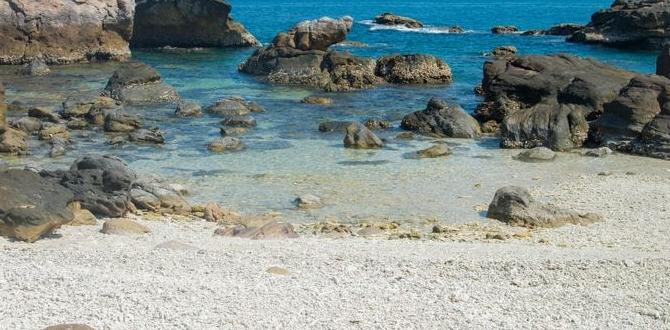Bhutan One Week Itinerary: Essential Travel Guide
A Bhutan one-week itinerary offers a glimpse into a unique culture and stunning landscapes. This guide provides a practical plan, hitting key sights like Paro Taktsang (Tiger’s Nest) and Punakha Dzong. We’ll break down a realistic schedule that balances cultural immersion, gentle hikes, and comfortable travel, ensuring a stress-free and unforgettable experience in the Land of the Thunder Dragon.
Welcome, fellow travelers! Planning a trip to Bhutan can bring up a lot of questions, especially when you have limited time. It’s a captivating country, but navigating its unique travel requirements and vast beauty in just seven days might seem tricky. You want to see the highlights, soak in the culture, and perhaps enjoy a peaceful hike, all without feeling rushed. Don’t worry, I’m here to help! This guide breaks down a perfect one-week itinerary, making your journey smooth and enjoyable. We’ll focus on practical steps and highlight the essential sights, ensuring you get the most out of your adventure.
Your Bhutan Adventure Starts Here: A 7-Day Expedition
Bhutan is a kingdom that has intentionally limited tourism to preserve its culture and environment. This means travel planning is a bit different, but it’s incredibly rewarding. For a one-week trip, the focus is typically on the western valleys, which hold many of Bhutan’s most iconic landmarks. This itinerary is designed for those seeking a blend of cultural exploration, natural beauty, and comfortable travel, with plenty of opportunities for stunning photos and quiet reflection.
Why a Week is Perfect for a Taste of Bhutan
A week is an excellent amount of time to experience the highlights of western Bhutan. It allows for a comfortable pace, enabling you to visit the major cultural sites, enjoy the stunning scenery, and even embark on a moderately challenging hike or two. You’ll fly into Paro International Airport (PBH), the only international airport in Bhutan, making your arrival and departure easy. This itinerary concentrates on the areas easily accessible from Paro, including Thimphu, Punakha, and the Paro Valley itself.
Understanding Bhutan’s Unique Travel Policy
Before we dive into the itinerary, it’s crucial to understand Bhutan’s tourism policy. Bhutan has a “High Value, Low Impact” tourism policy. This means all tourists (except Indian, Bangladeshi, and Maldivian citizens) must book their trip through a licensed Bhutanese tour operator and pay a Sustainable Development Fee (SDF), which is currently USD $100 per person per night. This fee contributes to Bhutan’s development, including education and healthcare. Your tour package will typically cover accommodation, a licensed guide, transport within Bhutan, meals, and entry fees to sites. This approach ensures a well-organized and enriching experience, and it simplifies planning immensely for beginners. You can find more details on the official Department of Tourism Bhutan website.
Your Essential Bhutan One Week Itinerary: A Day-by-Day Plan
This itinerary is a suggestion and can be customized with your tour operator to fit your interests. It’s designed to give you a comprehensive yet manageable taste of Bhutan.
Day 1: Arrival in Paro & Transfer to Thimphu (The Capital Charm)
Morning: Arrive at Paro International Airport. The flight into Paro is spectacular, offering views of the Himalayas. You’ll be met by your Bhutanese guide.
Afternoon: After completing immigration formalities, embark on a scenic drive to Thimphu, Bhutan’s capital city (approx. 1.5 hours). En route, stop at the Tamchog Lhakhang, an iron bridge temple built by the Tibetan saint Thangtong Gyalpo.
Late Afternoon: Check into your hotel in Thimphu. Begin your exploration with a visit to the Memorial Chorten, a prominent landmark dedicated to the third King of Bhutan.
Evening: Visit Tashichho Dzong, the impressive fortress that houses the throne room of His Majesty the King, and government offices. Enjoy dinner at a local restaurant.
Key Sights Today:
- Paro International Airport (PBH)
- Tamchog Lhakhang
- Memorial Chorten (Thimphu)
- Tashichho Dzong (Thimphu)
Day 2: Thimphu Culture & Exploration
Morning: Explore Thimphu’s cultural highlights. Visit the National Institute for Zorig Chusum (School of Arts and Crafts) to witness students learning Bhutan’s 13 traditional crafts. Then, see the Folk Heritage Museum for a glimpse into rural Bhutanese life.
Afternoon: Visit the Takin Preserve to see Bhutan’s peculiar national animal. Head to the Kuenselphodrang Nature Park to see the giant Buddha Dordenma statue, offering panoramic views of the Thimphu valley. Later, a textile museum will showcase Bhutan’s intricate weaving.
Evening: You might enjoy a visit to the weekend market (if your visit falls on a weekend) or explore the local handicraft shops.
Cultural Immersion in Thimphu:
- National Institute for Zorig Chusum
- Folk Heritage Museum
- Takin Preserve
- Buddha Dordenma Statue
- National Textile Museum
Day 3: Thimphu to Punakha via Dochula Pass (Scenic Beauty)
Morning: After breakfast, drive towards Punakha (approx. 3 hours). The journey takes you over the Dochula Pass (3,100m). On a clear day, you’ll be rewarded with breathtaking panoramic views of the Eastern Himalayas. The pass is adorned with 108 stupas, known as the Druk Wangyal Chortens.
Afternoon: Descend into the subtropical Punakha valley. Visit Chimi Lhakhang, the temple of the Divine Madman, known for its fertility blessings. A short, pleasant walk through rice paddies leads to the temple.
Late Afternoon: Check into your hotel in Punakha.
Evening: Relax and enjoy the serene environment of the Punakha valley.
Journey Highlights:
- Dochula Pass
- Druk Wangyal Chortens
- Chimi Lhakhang
- Punakha Valley Views
Day 4: Punakha’s Majestic Dzong & Countryside
Morning: Visit the magnificent Punakha Dzong, arguably the most beautiful dzong in Bhutan. It’s strategically located at the confluence of the Pho Chhu and Mo Chhu rivers. This ancient fortress served as the capital of Bhutan until 1955 and is still the winter residence of the central monastic body.
Afternoon: Take a scenic walk to the Drukgyal Dzong ruins (recently reconstructed, but often visited for its historical significance and views). Cross the longest suspension bridge in Bhutan, offering excellent photo opportunities.
Evening: Enjoy free time in the Punakha valley.
Punakha’s Treasures:
- Punakha Dzong
- Drukgyal Dzong (ruins/reconstruction)
- Punakha Suspension Bridge
Day 5: Punakha to Paro (Return to the Valley of Culture)
Morning: Enjoy a leisurely breakfast. Drive back towards Paro (approx. 4 hours), stopping at Dochula Pass again to admire the views in different light.
Afternoon: Upon arrival in Paro, visit the National Museum of Bhutan, housed in the Ta Rung (watchtower) which is a circular building below the Paro Dzong. Afterwards, explore the Paro Dzong (Rinpung Dzong), a fortress of considerable grandeur that houses monastic body and government administrative offices.
Late Afternoon: Check into your hotel in Paro.
Evening: Stroll through Paro town, explore local shops, and enjoy dinner.
Paro Valley Arrival:
- National Museum of Bhutan
- Paro Dzong (Rinpung Dzong)
- Paro Town Exploration
Day 6: Hike to the Iconic Tiger’s Nest Monastery
Full Day: Today is the highlight for many – the hike to Paro Taktsang, the Tiger’s Nest Monastery. This sacred site clings precariously to a cliffside 900 meters above the Paro valley. The hike is moderately challenging, taking about 4-5 hours round trip.
The Hike: The trail ascends through pine forests. You’ll pass a cafeteria halfway up, offering a well-deserved break and stunning views of the monastery. From there, the final ascent is steeper. The monastery itself is breathtaking, filled with intricate artwork and imbued with spiritual significance.
Afternoon: Descend and return to your hotel.
Evening: Consider a traditional Bhutanese hot stone bath (optional, often booked through your hotel) for a relaxing end to an active day.
The Iconic Tiger’s Nest:
- Paro Taktsang (Tiger’s Nest Monastery)
- Moderate hike with stunning views
- Cafeteria break point
- Spiritual and cultural significance
Day 7: Departure from Paro
Morning: Enjoy your final Bhutanese breakfast. Depending on your flight schedule, you may have time for some last-minute souvenir shopping in Paro town.
Transfer: Your guide will transfer you to Paro International Airport for your departure.
Essential Pre-Trip Planning & What to Pack
Planning your Bhutan trip is straightforward thanks to the tour operator system. However, packing requires a little thought for comfort and readiness.
Visa and Permits
Your tour operator will handle your visa application. You’ll need a passport valid for at least six months beyond your intended stay and a recent passport-sized photograph. The visa fee is usually included in your package.
Currency
The Bhutanese Ngultrum (BTN) is pegged to the Indian Rupee (INR), which is also widely accepted. ATMs are available in major towns, but it’s wise to carry some USD or INR in cash for smaller purchases or tips.
Language
The official language is Dzongkha. However, English is widely spoken in tourist areas and by guides.
What to Pack for Comfort and Convenience
Bhutan’s terrain and climate can vary. Packing smart makes a big difference.
<table>
<thead>
<tr>
<th>Category</th>
<th>Recommended Items</th>
<th>Why it’s Essential</th>
</tr>
</thead>
<tbody>
<tr>
<td>Clothing</td>
<td>
<ul>
<li>Layering pieces (t-shirts, long-sleeved shirts)</li>
<li>Fleece jacket or warm jumper</li>
<li>Waterproof and windproof jacket</li>
<li>Comfortable trousers/hiking pants</li>
<li>A modest outfit for visiting monasteries (shoulders and knees covered)</li>
</ul>
</td>
<td>Bhutan’s climate can change quickly. Layering is key for adapting to different altitudes and temperatures. Modest clothing is required for religious sites to show respect.</td>
</tr>
<tr>
<td>Footwear</td>
<td>
<ul>
<li>Comfortable walking/hiking shoes</li>
<li>Sandals or slip-on shoes for hotels</li>
</ul>
</td>
<td>You’ll be doing a lot of walking and some light hiking. Having a sturdy, broken-in pair of shoes is crucial. Easy-to-remove footwear is convenient for entering temples.</td>
</tr>
<tr>
<td>Accessories</td>
<td>
<ul>
<li>Sunscreen (high SPF)</li>
<li>Hat or cap</li>
<li>Sunglasses</li>
<li>Reusable water bottle</li>
<li>Small backpack/daypack</li>
<li>Camera and extra batteries/power bank</li>
<li>Personal medications</li>
</ul>
</td>
<td>Protect yourself from the sun at high altitudes. Staying hydrated is important. A daypack is vital for carrying essentials during excursions. Power banks ensure you don’t miss photo opportunities.</td>
</tr>
<tr>
<td>Comfort Travel Items</td>
<td>
<ul>
<li>Travel-sized toiletries</li>
<li>Snacks (if you have specific dietary needs)</li>
<li>Adult diapers or pull-ups (for personal comfort and long journeys)</li>
<li>Baby diapers/pull-ups (if traveling with children)</li>
</ul>
</td>
<td>While hotels provide basics, having your preferred items is comforting. Carrying extra sustenance can be useful. For long drives or flights, having dependable adult or children’s diapers ensures continuous comfort and peace of mind without the worry of finding facilities.</td>
</tr>
</tbody>
</table>
Pro-Tip for Travelers with Specific Needs:
For those who might need extra assurance, especially if managing health conditions, long drives, or extended sightseeing, carrying adult diapers or pull-ups is a sensible and discreet solution. Brands like Attends or Depend offer a range of absorbencies for maximum comfort and security. Similarly, if you’re traveling with young children, having a supply of reliable baby diapers or pull-ups can make the journey significantly smoother. This proactive approach allows you to focus on the incredible experiences Bhutan offers without any added stress. Remember to pack these essentials discreetly in your daypack or luggage.
Connectivity
Wi-Fi is available in most hotels, but it can be slow and patchy. Consider getting a local SIM card if reliable internet access is crucial.
Making the Most of Your Bhutan Experience
Beyond the itinerary, here are a few tips to enhance your trip:
Engage with your guide: Bhutanese guides are incredibly knowledgeable and passionate about their culture. Ask questions!
Be open to new experiences: Try the local cuisine (Ema Datshi is a must-try, though spicy!), observe local customs, and embrace the unique pace of life.
Respect local traditions: Dress modestly when visiting religious sites, ask permission before taking photos of people, and be mindful of local etiquette.
Stay hydrated: Drink plenty of water, especially at higher altitudes like Dochula Pass.
* Embrace the peace: Bhutan is known for its Gross National Happiness index. Take time to disconnect and appreciate the tranquility.
Frequently Asked Questions (FAQ) About Bhutan
<h3>Q1: Is Bhutan expensive to visit for one week?</h3>
<p>Yes, Bhutan is considered a premium destination due to its tourism policy. The mandatory Sustainable Development Fee (SDF) of $100 per person per night, along with the cost of a tour package covering accommodation, guide, and transport, makes it more expensive than many Southeast Asian countries. However, this fee supports Bhutan’s conservation efforts and development, ensuring a high-quality, low-impact tourist experience.</p>
<h3>Q2: Do I need to book everything through a tour operator?</h3>
<p>For most nationalities, yes, you are required to book your trip through a licensed Bhutanese tour operator who will arrange your visa, SDF, accommodation, guide, and transportation. This system ensures your trip is well-organized and aligns with Bhutan’s tourism policy.</p>
<h3>Q3: What is the best time of year to visit Bhutan?</h3>
<p>The best times to visit Bhutan are during spring (March to May) and autumn (September to November). These seasons offer clear skies, pleasant temperatures, and vibrant festivals. Summer can be warmer with more rainfall, while winter is cold but can offer stunning views and fewer crowds.</p>
<h3>Q4: What should I wear to visit monasteries in Bhutan?</h3>
<p>You must




